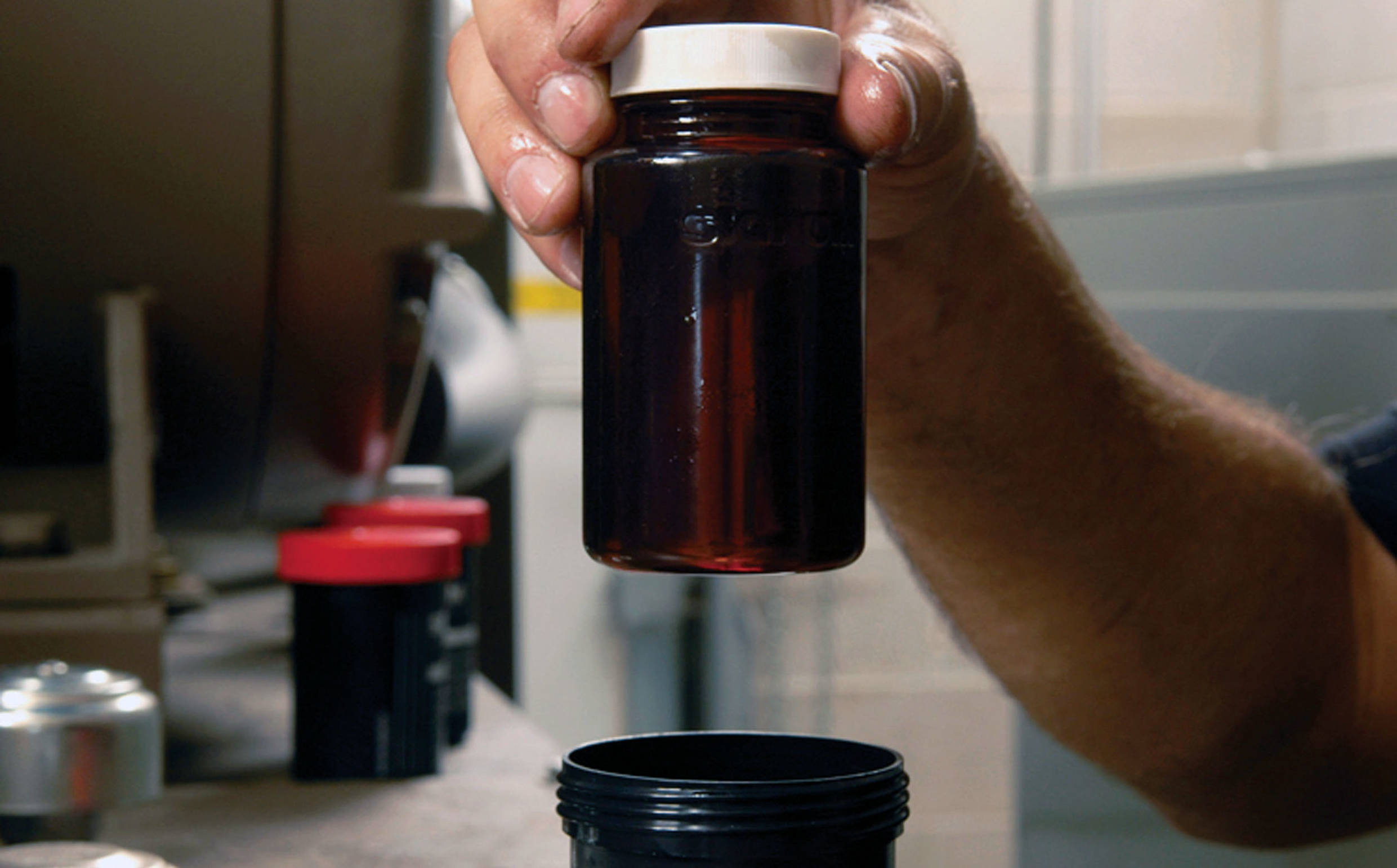
The 3S System: See, Smell, Sample
SEE
Looking at the hydraulic fluid is the simplest way to determine if it may be contaminated. Clean fluid is almost clear to amber in color. A milky, dark, or otherwise abnormal color may indicate the presence of one or more contaminants. A milky appearance usually suggests water contamination. If the fluid looks milky, take immediate action to avoid severe damage to your hydraulic system. Stop the influx of water and remove the water from the system immediately. Water can be removed by passing the fluid through water-absorbing filters, or by flushing or draining the entire hydraulic system.
SMELL
A marked change in the smell of the hydraulic fluid can indicate a chemical breakdown. This type of breakdown is generally due to air that has become entrained in the fluid, which creates varnish-like nitrogen-oil compounds that contaminate the fluid. If a distinct change in the smell of hydraulic fluid is detected, have it chemically analyzed.
SAMPLE
Most hydraulic fluid deterioration requires chemical analysis to detect. Normal operation of your hydraulic system will cause the fluid to deteriorate over time, and the question becomes: is it too soon or too late to change the fluid? You need fluid analysis to know if it is still in good condition or is posing a danger to your test systems and components. Proper chemical analysis can spare the expense of prematurely changing out usable fluid and avoid the damage caused by contaminated or deteriorated fluid.

